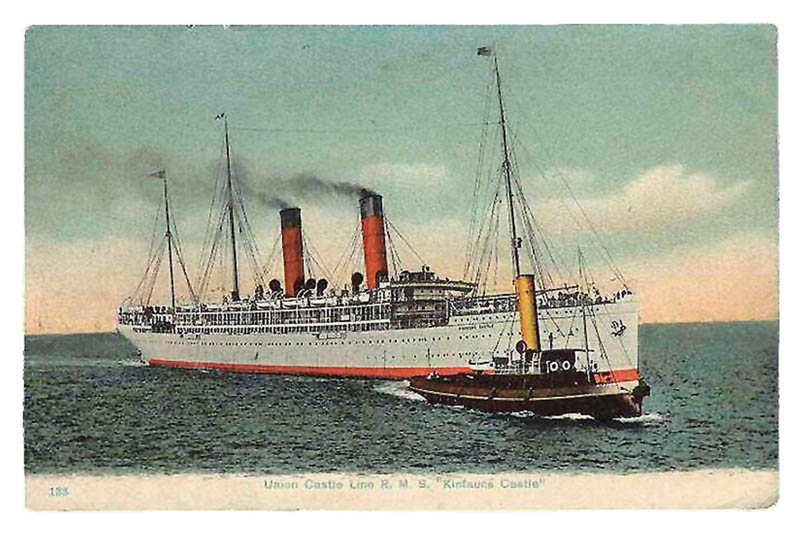
Harry Gaffney served on HMS Kinfauns Castle at the start of the war.
Harry Cecil Gaffney was born on 11th November 1893 in Menston, near Leeds. After leaving Framlingham College at the age of sixteen, Harry joined the navy as a cadet and was sent to the training ship HMS Conway, based in Liverpool. At the HMS Conway, the boys were taught all aspects of seamanship with the expectation that they would become officers in the Merchant Navy. Harry spent two years there, after which he started a three-year apprenticeship before the mast on the Inversnaid, a three-masted sailing barque that plied its trade on the South America routes. From the experience he gained on the Inversnaid, Harry applied for his “Second Mate” Certificate and passed the examinations on 21st July 1914, however, due to the imminent outbreak of war, Harry wasn’t to return to the Inversnaid. Instead, he joined HMS Kinfauns Castle, an armed merchant cruiser, as a midshipman.
HMS Kinfauns Castle sailed on 15th August 1914 and headed south towards the southern hemisphere and South Africa. Here it took part in several actions aimed at preventing the Germans from establishing control of the coastal ports.
On 15th July 1915, Harry was briefly posted to HMS Challenger before spending six months on HMS Hyacinth, the flagship of the Cape of Good Hope Station, where he was promoted to Acting Sub-Lieutenant. The Hyacinth was involved in the blockading of the German battleship Konigsberg in the Rufiji Delta where it was moored while attempting to carry out repairs on its engines.
A letter written by Harry Gaffney from HMS Kinfauns Castle 
confirming his qualification as a Second Mate.
On 13th January 1916, Harry joined HMS Severn and the following month he was made Sub-Lieutenant. In April 1918, Harry was based at HMS Acteon a depot ship for torpedo boats at Sheerness in Kent where Harry was given his first command, Torpedo Boat 20. Harry remained in the navy until he was demobilised on 30th November 1919 as a full lieutenant.
Between the wars, Harry returned to the Merchant Navy for a few months, sailing as third mate on the Admiral Keyes. After that he had various jobs, from publicity manager for a film company to owner of a demolition company.
In 1938, he re-joined the navy and commanded minesweepers and landing craft during the Second World War. His final action at sea was as commanding officer of a landing craft at the “D” Day landings. He was demobilised in February 1945 and two years later he emigrated to Southern Africa. He died in May 1967 in South Africa having choked on a chicken bone.
For his war service during the First World War, Harry received the 1914-15 Star and the British War and Victory Medals.
